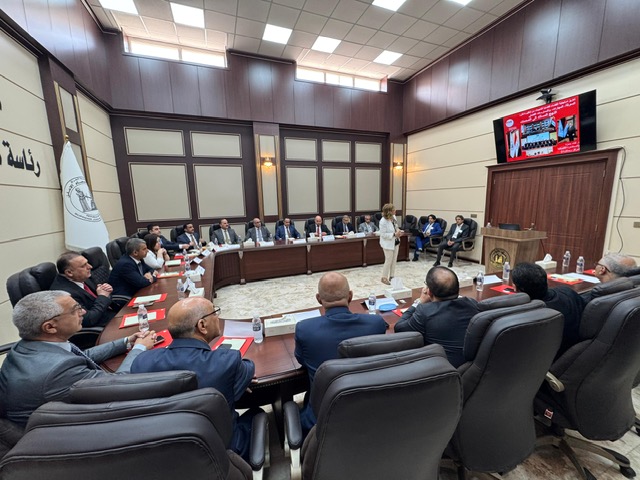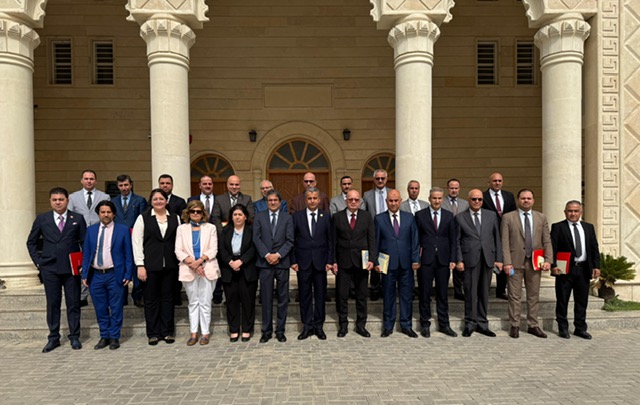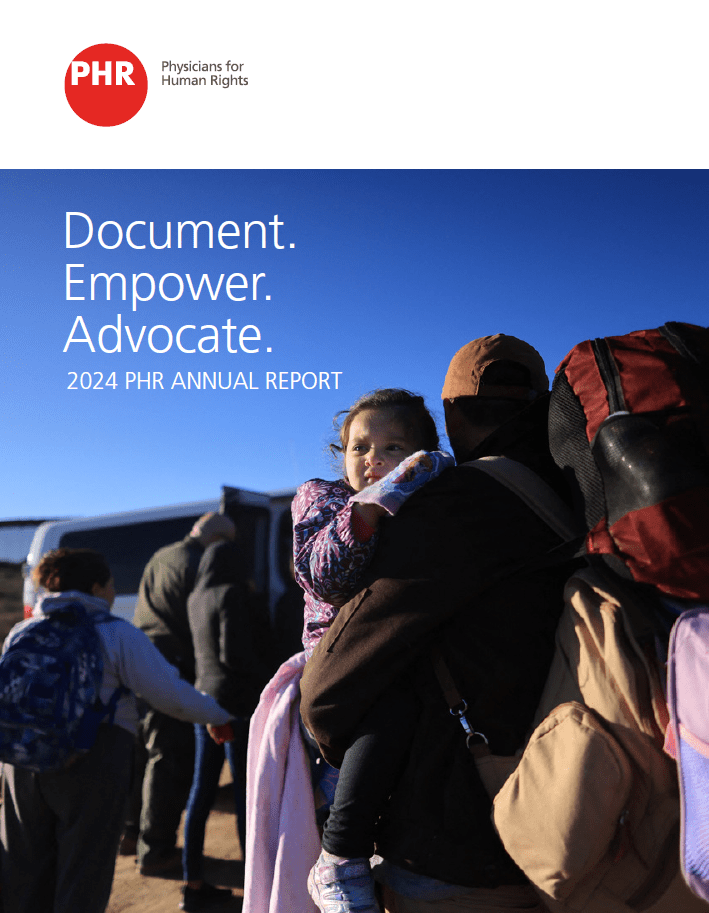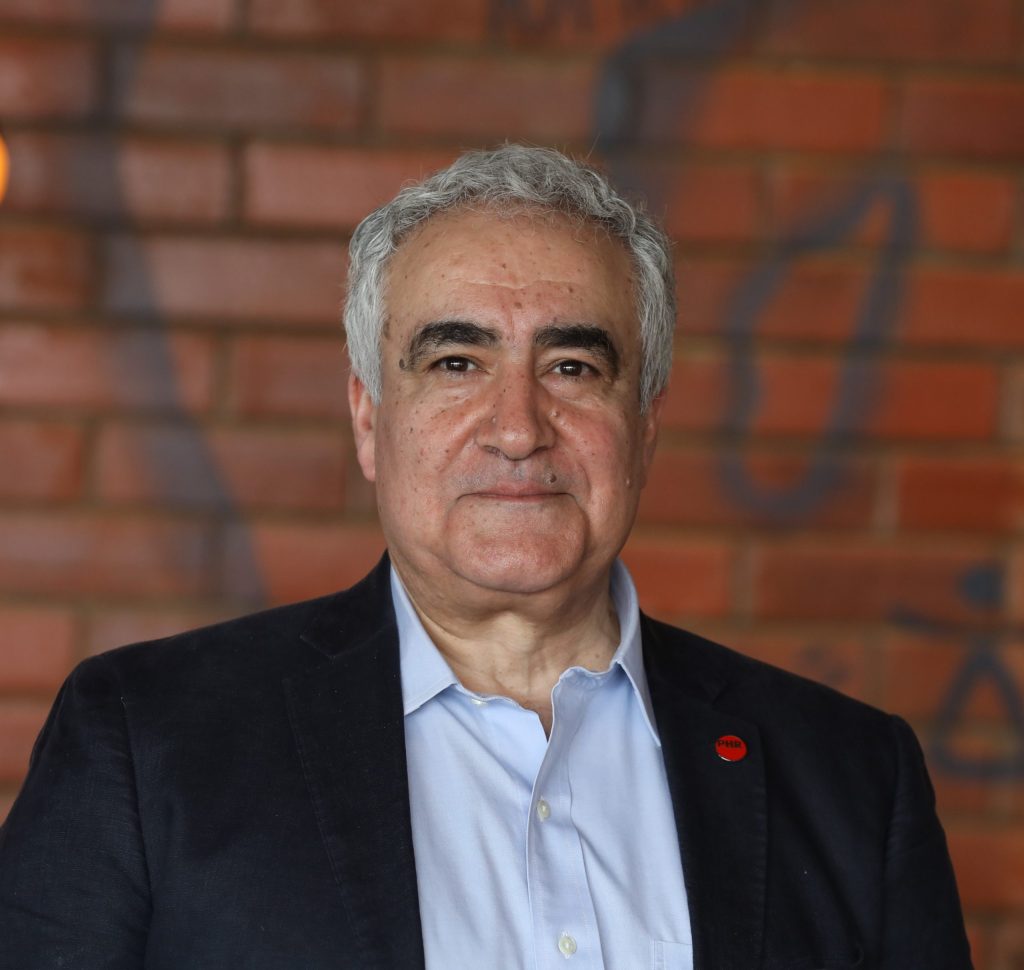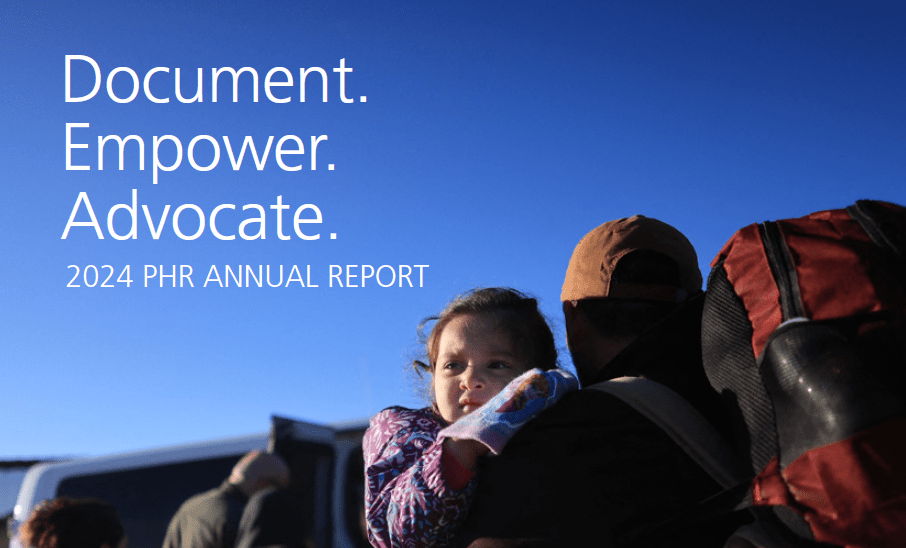What does international law say about access to medical supplies in conflict zones? What is the obligation of parties to a conflict to ensure access to health care supplies?
Medical supplies are never to be used strategically in warfare. In times of conflict, all parties to the conflict must both “allow and facilitate rapid and unimpeded passage of humanitarian relief for civilians in need.”[1] States under human rights law continue to have core obligations to maintain essential primary care, including through the provision of minimum essential food, and essential drugs.[2] In contexts where there is an ongoing occupation, the Fourth Geneva Convention of 1949 applies and requires that the Occupying Power, to the fullest extent of its available means, comply with its “duty of ensuring the food and medical supplies of the population; it should, in particular, bring in the necessary foodstuffs, medical stores and other articles if the resources of the occupied territory are inadequate.”[3]
Can a party prohibit access to certain medical supplies in conflict?
Typically, parties to the conflict cannot prohibit access to essential medical supplies. In situations where there is a serious risk that the medical supplies, included as part of humanitarian relief, may be diverted from their destination, a party to an international armed conflict does not need to allow free passage of consignments of medical aid.[4] However, in the context of an Occupation, if all or part of the population of the occupied territory does not have adequate supplies, the Occupying Power must ensure adequate relief schemes for that population and must “facilitate them by all means at its disposal.”[5] Thus, the Occupying Power cannot simply prohibit all access to medical supplies, although they can determine how such aid is provided. Further, under some circumstances, the denial of lifesaving health care in conflict may rise to the level of a war crime or crime against humanity under international criminal law.[6]
What is a “dual use” item?
A “dual use” item is an item that can be used for military and civilian purposes.[7] “Dual use” items are an important part of a country’s import and export control laws, which align with international treaty obligations to not transfer items or materials that could contribute to the proliferation of biological, nuclear, or chemical weapons.[8] “Dual use” items are also commonly considered within a country’s sanctions regimes.[9] In the context of armed conflict, the concept of “dual use” was not originally contemplated in the Geneva Conventions and their Additional Protocols, but has gradually increased over the past two decades, especially since the 9/11 attacks.[10]
How are “dual use” items regulated?
Each country decides what items and materials it considers to be “dual use” in their import and export control laws and policies. This prevents the transfer of these “dual use” items from one country to another and restricts “dual use” items from entering the country. The export and trade of “dual use” items may also be restricted through sanctions imposed by an individual country, regional authority, or the United Nations Security Council.
Are there international standards for “dual use” item regulation?
There is no international standard for the regulation of “dual use” items. This lack of an international standard applies to criteria for classifying items as “dual use,” restriction procedures for these items, and humanitarian exemptions for items.[11]
There are some international treaties concerning the non-proliferation of weapons of mass destruction, such as the 1972 Biological and Toxin Weapons Convention,[12] the 1993 Chemical Weapons Convention,[13] and the 1968 Treaty on the Non-Proliferation of Nuclear Weapons.[14] These treaties outline state obligations to not allow the transfer of items prohibited by these conventions.[15] However, these conventions do not have a specific list of “dual use” items subject to regulation. The one exception is the 1993 Chemical Weapons Convention, which includes a list of chemicals whose transfer is prohibited or intended use is regulated depending on their classification within three categories or “Schedules.”[16]
Outside of international treaties, the regulation of “dual use” items has been supplemented by non-treaty international export “regimes.” These multilateral regimes are not legally binding but are political agreements by participating states who agree to adhere to the export control lists and best practices of a given regime.[17] These regimes include the Australia Group,[18] the Missile Technology Control Regime,[19] the Nuclear Suppliers Group,[20] and the Wassenaar Arrangement on Export Controls for Conventional Arms and Dual-use Goods and Technologies.[21] While these regimes consist of informal groups of states and are politically binding control lists and best practices for those states, they can also serve as helpful examples of state practice and represent the accepted norms surrounding “dual use” item regulation.
Further examples of state practice regarding “dual use” item regulation can be found in individual country’s sanction regimes. In sanction regimes, the transfer of “dual use” items to a particular country is often restricted to curtail the military capacity of state and non-state forces and enforce compliance with international law. Individual countries, regional authorities (like the European Union), and the United Nations Security Council can also impose sanctions.
Are medical supplies considered “dual use” under international export regimes?
Under both international export and sanctions regimes, there is no precedent of medical supplies being restricted as “dual use.”
The Wassenaar Arrangement, Missile Technology Control Regime, and Nuclear Suppliers Group all include detailed language clarifying that items on their “dual use” lists that are intended for medical purposes are not subject to import and export control.[22] The Wassenaar Arrangement includes this specific agreement in its “dual use” item list: “Participating countries agree that equipment specially designed for medical end-use that incorporates an item controlled in the Dual-Use List is not controlled.”[23]
Like international export regimes, sanctions regimes imposed by individual countries, regional authorities, and the United Nations have included language outlining exemptions or exceptions for humanitarian actors, activities, or goods.[24] Exemptions permit humanitarian actors to apply for special approval to bring certain items, particularly those that could be considered “dual use,” into the country under sanctions.[25] Exceptions are provisions within sanction regimes that explicitly exclude the transfer of items intended for humanitarian or medical end-use from sanctions control.[26] A recent example[27] is the sanctions placed on the Russian occupied territories in Ukraine (Donetsk, Kherson, Luhansk, and Zaporizhzhia) by the European Union.[28] These sanctions include specific language noting that sanction controls on goods do not apply to humanitarian actors affiliated with or certified by the European Union who carry out activities in occupied territories.[29]
What items are classified as “dual use” and restricted from entering the Occupied Palestinian Territories (OPT) by Israel? Does Israel restrict medical supplies as “dual use” items?
It is difficult to determine what specific items Israel officially considers to be “dual use.”[30] The official list of items Israel considers to be “dual use,” which require special permission to enter the OPT, can be found in the 2008 Defense Export Control Order, amended in 2015.[31] This official list is composed of two parts: 56 items that require special approval to enter the OPT and 61 additional items that are regulated when entering the Gaza Strip specifically.
Controlled “dual use” items on this list include chemical compounds, metals and construction materials, machine parts, communications equipment, optic equipment and scanners, drilling equipment, and water pumps and sanitation materials. Some items on the list are specific, such as “Aluminum rods, circumference between 50 to 150mm,” while others are listed as broad categories, such as “Equipment and tools of physical and chemical analysis.”[32] Many items could be classified as being part of these broader categories, suggesting that the list may be much longer than it appears.
On March 28, 2022, Israel announced that 56 types of communication equipment will no longer require the special approval needed for items Israel considers “dual use.”[33] Israel made a similar announcement on January 2, 2023, stating that 50 medical items will no longer need special approval.[34] These items include surgical instruments, equipment, and devices as well as thermometers, sterilization equipment, and ventilators. The items listed as no longer requiring special approval in these announcements were not named explicitly in Israel’s original 2008 Defense Export Control Order. In November 2024, another updated list detailing “dual use” items that had been pre-approved for entry into Gaza (no longer requiring special approval) was released.[35] This list included several medical items such as X-ray machines; oxygen generators, concentrators, and flow meters; echo doppler ultrasounds; portable anesthesia machines; vital signs monitors; electrocardiographs; pre-pregnancy and postpartum supplies; and wheelchairs and crutches.[36] This implies that these items were treated as “dual use” items and regulated as such and indicates that the 2008 order does not reflect the comprehensive list of medical supplies that are considered “dual use” items by Israel. This also exemplifies the lack of transparency and clarity which has made determining which items Israel officially considers as “dual use” difficult for those seeking to provide humanitarian medical support in Gaza.
How do Israel’s “dual use” item restrictions compare to other export control regimes?
Israel is not a participating state in any of the multilateral export regimes (Australia Group, Missile Technology Control Regime, the Nuclear Suppliers Group, and the Wassenaar Arrangement), nor is Israel party to the 1993 Chemical Weapons Convention. While there is some overlap between chemical substances, materials, machinery, and communications equipment listed in the 2008 Defense Export Control Order and the multilateral regimes, Israel’s “dual use” regulations go beyond these international norms.
The same can be said when comparing Israel’s 2008 Defense Export Control Order and the list of items restricted from entering Russian-occupied territories in Ukraine through sanction controls imposed by the European Union.[37] This is due in part to the broad categories on Israel’s “dual use” list within the 2008 Defense Export Control Order, which could be interpreted as applying to many individual items that are not specifically listed.
Additionally, Israel specifically lists items that are not included in the multilateral export regimes like fertilizers, pesticides, and water skis. Israel’s list does not include language outlining any possible exemptions for medical end-use, unlike the specific exceptions made in export and sanctions regimes. Israel’s announcement of medical items that will no longer require special approval indicates that Israel has been treating at least some medical items as “dual use” items. As previously mentioned, there is no precedent for the restriction of medical supplies as “dual use” under international export regimes and sanctions regimes. This is a significant difference between Israel’s restrictions and international norms, including sanctions imposed on areas experiencing armed conflict like Russian-occupied territories in Ukraine.
How has the war in Gaza impacted Israel’s practices in terms of restrictions on medical supplies? Were additional items restricted from entering Gaza beyond what was included in the list of “dual use” items? What items were restricted?
Organizations providing humanitarian aid reported items that were restricted from entering Gaza beyond those indicated in the 2008 Defense Export Control Order. These include anesthesia, oxygen cylinders, cancer medications, maternity kits, water filtration systems, water purification tabs, insulin, batteries, ultrasound machines, scissors, generators, crutches, wheelchairs, ventilators, X-ray machines, and sanitary pads and menstrual health kits.[38] Other than restrictions on specific items used in water filtration systems,[39] the rest of the aforementioned items were not explicitly listed in Israel’s 2008 Defense Export Control Order. In interviews analyzed by Physicians for Human Rights, health care workers deployed to Gaza reported restrictions on anesthesia, pain killers, sanitation supplies, scalpels and their handles, insulin, orthopedic materials (drills, screws, plates, etc.), suture supplies, dressings and gauze, ultrasound machines, airway and intubation supplies, AI Stat machines for blood monitoring, water purification materials, hormone medications for reproductive health, dialysis supplies, batteries, oxygen cylinders, tourniquets, clamps and staplers for wound closure, and pulse oximeters. Like the restricted items reported by organizations, other than restrictions on water filtration supplies, the rest of the items are not explicitly mentioned in Israel’s 2008 Defense Export Control Order.
Several of the items reported as restricted fall within the list of medical items that since January 2023 no longer require special approval for entry into Gaza. Per Israel’s own policy, surgical equipment, instruments, and devices; sinks; electric wheelchairs; fetal dopplers; machines for sterilizing medical equipment; UV sterilizers; ventilators; sterile sealing machines; oxygen regulators; pulse oximeters; and tourniquets should not be restricted. However, based on reports from health workers and organizations providing aid to Gaza, this list of unrestricted items has not been applied following October 7, 2023. Many of the medical items reported as restricted, such as X-ray machines, ultrasound machines, pre-pregnancy and postpartum supplies, wheelchairs, and crutches, are included in the November 2024 updated list as “dual use” items pre-approved for entry into Gaza.[40] Israeli officials have claimed that they are abiding by the 2008 Defense Export Control Order,[41] however, as previously outlined, the items reported as restricted are not explicitly stated on this list. Our research shows that there is not a publicly available official, definitive, and updated list of items that are restricted from entering Gaza that is being enforced by Israel.[42]
Based on the evidence collected here, it is clear that these restrictions on medical supplies entering Gaza imposed by Israel extend well beyond legitimate security concerns about “dual use” items that could serve military purposes. The breadth and scope of “dual use” restrictions and additional ad hoc limitations imposed after October 7, 2023 fail to align with international standards and do not include established humanitarian exemptions under “dual use” regimes, suggesting objectives that reach far beyond preventing military advantage.
[1] The International Committee of the Red Cross, “Customary International Humanitarian Law Study, Rule 55,” 55, accessed June 26, 2025, https://ihl-databases.icrc.org/en/customary-ihl/v1/rule55. (establishing this as a norm of customary international law applicable in both international and non-international armed conflicts).
[2] Office of the High Commissioner for Human Rights, “Committee on Economic, Social, and Cultural Rights, General Comment 14: The Right to the Highest Attainable Standard of Health (Art. 12), E/C.12/2000/4,” August 11, 2000, https://www.ohchr.org/sites/default/files/Documents/Issues/Women/WRGS/Health/GC14.pdf.
[3] The International Committee of the Red Cross, “Convention (IV) Relative to the Protection of Civilian Persons in Time of War. Geneva, 12 August 1949. Article 55 – Food and Medical Supplies for the Population,” accessed June 27, 2025, https://ihl-databases.icrc.org/en/ihl-treaties/gciv-1949/article-55; See also, The International Committee of the Red Cross, “Convention (IV) Relative to the Protection of Civilian Persons in Time of War. Geneva, 12 August 1949. Article 56 – Hygiene and Public Health,” accessed June 27, 2025, https://ihl-databases.icrc.org/en/ihl-treaties/gciv-1949/article-56.
[4] The International Committee of the Red Cross, “Convention (IV) Relative to the Protection of Civilian Persons in Time of War. Geneva, 12 August 1949. Article 55 – Food and Medical Supplies for the Population,” 55; The International Committee of the Red Cross, “Convention (IV) Relative to the Protection of Civilian Persons in Time of War. Geneva, 12 August 1949. Article 56 – Hygiene and Public Health,” 56.
[5] The International Committee of the Red Cross, “Convention (IV) Relative to the Protection of Civilian Persons in Time of War. Geneva, 12 August 1949. Article 59 – Relief I. Collective Relief,” accessed June 27, 2025, https://ihl-databases.icrc.org/en/ihl-treaties/gciv-1949/article-59; The International Committee of the Red Cross, “Convention (IV) Relative to the Protection of Civilian Persons in Time of War. Geneva, 12 August 1949. Article 60 – Relief II. Responsibilities of the Occupying Power,” accessed June 27, 2025, https://ihl-databases.icrc.org/en/ihl-treaties/gciv-1949/article-60. It should be noted further that “the Occupying Power shall in no way divert relief supplies from the purpose for which they are intended” except for in cases of urgent necessity which are in the interest of the population of the occupied territory.
[6] See generally, Dustin A. Lewis, Naz K. Modirzadeh, and Gabriella Blum, “Medical Care in Armed Conflict: International Humanitarian Law and State Responses to Terrorism” (Harvard Law School Program on International Law and Armed Conflict, September 2015), https://papers.ssrn.com/sol3/papers.cfm?abstract_id=2657036.
[7] See e.g. “Nato Standard | AJP-3.9 | Allied Joint Doctrine for Joint Targeting, Edition B, Version 1” (NATO Standardization Office (NSO), November 9, 2021), https://assets.publishing.service.gov.uk/government/uploads/system/uploads/attachment_data/file/1033306/AJP-3.9_EDB_V1_E.pdf.
[8] Machiko Kanetake, “Dual-Use Export Control: Security and Human Rights Challenges to Multilateralism,” in European Yearbook of International Economic Law 2020, ed. Marc Bungenberg et al. (Cham: Springer International Publishing, 2022), 265–90, doi:10.1007/8165_2021_67.
[9] Alice Debarre, “Safeguarding Humanitarian Action in Sanctions Regimes” (International Peace Institute, June 24, 2019), https://www.ipinst.org/wp-content/uploads/2019/06/1906_Sanctions-and-Humanitarian-Action.pdf.
[10] Oona A. Hathaway, Azmat Khan, and Mara Redlich Revkin, “The Dangerous Rise of Dual-Use Objects in War,” SSRN Scholarly Paper (Rochester, NY: Social Science Research Network, August 27, 2024), doi:10.2139/ssrn.4938707.
[11] Kolja Brockmann, “Challenges to Multilateral Export Controls: The Case for Inter-Regime Dialogue and Coordination” (SIPRI, December 2019), https://www.sipri.org/publications/2019/policy-reports/challenges-multilateral-export-controls-case-inter-regime-dialogue-and-coordination.
[12] United Nations, Office for Disarmament Affairs, “Convention on the Prohibition of the Development, Production and Stockpiling of Bacteriological (Biological) and Toxin Weapons and on Their Destruction,” Office for Disarmament Affairs Treaties Database, April 10, 1972, https://treaties.unoda.org/t/bwc.
[13] The Organisation for the Prohibition of Chemical Weapons (OPCW), “Chemical Weapons Convention | OPCW,” accessed June 27, 2025, https://www.opcw.org/chemical-weapons-convention.
[14] United Nations, Office for Disarmament Affairs, “Treaty on the Non-Proliferation of Nuclear Weapons,” July 1, 1968, https://treaties.unoda.org/t/npt.
[15] Kanetake, “Dual-Use Export Control.”
[16] The Organisation for the Prohibition of Chemical Weapons (OPCW), “Annex on Chemicals,” OPCW, accessed June 27, 2025, https://www.opcw.org/chemical-weapons-convention/annexes/annex-chemicals/annex-chemicals.
[17] Brockmann, “Challenges to Multilateral Export Controls.”
[18] “History,” The Australia Group, accessed June 27, 2025, https://www.dfat.gov.au/publications/minisite/theaustraliagroupnet/site/en/origins.html.
[19] Missile Technology Control Regime (MTCR), “Frequently Asked Questions (FAQ),” accessed June 27, 2025, https://www.mtcr.info/en/faq.
[20] Nuclear Suppliers Group, “About the NSG,” accessed June 27, 2025, https://www.nuclearsuppliersgroup.org/index.php/en/about/about-the-nsg.
[21] The Wassenaar Arrangement, “About Us,” accessed June 27, 2025, https://www.wassenaar.org/about-us/.
[22] The Australia Group, “Control List of Dual-Use Chemical Manufacturing Facilities and Equipment and Related Technology and Software,” June 30, 2023, https://www.dfat.gov.au/publications/minisite/theaustraliagroupnet/site/en/dual_chemicals.html; Missile Technology Control Regime (MTCR), “MTCR Guidelines and the Equipment, Software and Technology Annex,” accessed June 27, 2025, https://www.mtcr.info/en/mtcr-guidelines; Nuclear Suppliers Group, “NSG – Guidelines,” accessed June 27, 2025, https://www.nuclearsuppliersgroup.org/index.php/en/guidelines/nsg-guidelines; “Control Lists,” The Wassenaar Arrangement, accessed June 27, 2025, https://www.wassenaar.org/control-lists/.
[23] “List of Dual-Use Goods and Technologies and Munitions List” (Wassenaar Arrangement on Export Controls for Conventional Arms and Dual-Use Goods and Technologies, 2024). https://www.wassenaar.org/control-lists/.
[24] Debarre, “Safeguarding Humanitarian Action in Sanctions Regimes.”
[25] Ibid.
[26] Ibid.
[27] For other examples of exemptions and exceptions for items with humanitarian and medical end-use, See
United Nations Security Council, “Security Council Resolution 661 – UNSCR,” accessed June 27, 2025, http://unscr.com/en/resolutions/661; United Nations Security Council, “S/RES/1737 (2006) | Security Council,” accessed June 27, 2025, https://main.un.org/securitycouncil/en/s/res/1737-%282006%29.
[28] Council Regulation (EU) 2022/263 of 23 February 2022 concerning restrictive measures in response to the illegal recognition, occupation or annexation by the Russian Federation of certain non-government controlled areas of Ukraine (2022). http://data.europa.eu/eli/reg/2022/263/2022-10-07/eng.
[29] Council Regulation (EU), “Consolidated Text: Council Regulation (EU) 2022/263 of 23 February 2022 Concerning Restrictive Measures in Response to the Illegal Recognition, Occupation or Annexation by the Russian Federation of Certain Non-Government Controlled Areas of Ukraine,” accessed June 27, 2025, https://eur-lex.europa.eu/eli/reg/2022/263/2022-10-07/eng.
[30] GISHA – Legal Center for Freedom of Movement, “Red Lines, Gray Lists,” November 1, 2022, https://features.gisha.org/red-lines-gray-lists/.
[31] Israel Ministry of Defense, “The 2008 Dual Export Control Order,” accessed June 27, 2025, https://exportctrl.mod.gov.il:443/Hakika/Pages/240618.aspx. The original version is in Hebrew.
[32] Ibid.
[33] Gisha provides a full English translation of the list of communication equipment. See, GISHA – Legal Center for Freedom of Movement, “Thermometers, Incubators, and ‘Selfie Sticks’: 100 Products That Israel Will No Longer Treat as ‘Dual-Use,’” February 9, 2023, https://gisha.org/en/thermometers-incubators-and-selfie-sticks-100-products-that-israel-will-no-longer-treat-as-dual-use-items/.
[34] Gisha provides a full English translation of the list of medical equipment. See, Ibid.
[35] Palestine – Logistics Cluster, “Palestine – Logistics Cluster Meeting Minutes, Jerusalem/Amman/Cairo, 13 February 2025 | Logistics Cluster Website,” accessed June 27, 2025, https://www.logcluster.org/en/document/palestine-logistics-cluster-meeting-minutes-jerusalemammancairo-13-february-2025.
[36] GISHA- Legal Center for Freedom of Movement, “Approval for the Entry of Dual Use Equipment – November 2024: Unofficial Translation,” accessed June 26, 2025, https://docs.google.com/document/u/0/d/e/2PACX-1vTomNNf8ZKonZht6yfWLF8d9L8gi5Ag7AN8V7be9ox40Sh74r3jKWuOzirHwhZuKA/pub?pli=1.
[37] Council Regulation (EU), “Consolidated Text: Council Regulation (EU) 2022/263 of 23 February 2022 Concerning Restrictive Measures in Response to the Illegal Recognition, Occupation or Annexation by the Russian Federation of Certain Non-Government Controlled Areas of Ukraine.”
[38] ActionAid, “Essential Aid Including Food and Medical Supplies Prevented from Entering Gaza, as 2.3 Million People Face Starvation and Disease | ActionAid International,” January 19, 2024, https://actionaid.org/news/2024/essential-aid-including-food-and-medical-supplies-prevented-entering-gaza-23-million; Tamara Qiblawi et al., “Anesthetics, Crutches, Dates: The Aid Israel Is Arbitrarily Keeping from Gaza,” CNN, March 2, 2024, https://www.cnn.com/2024/03/01/middleeast/gaza-aid-israel-restrictions-investigation-intl-cmd; Refugees International, “Siege and Starvation: How Israel Obstructs Aid to Gaza,” Refugees International, Refugees International, (May 29, 2025), https://www.refugeesinternational.org/reports-briefs/siege-and-starvation-how-israel-obstructs-aid-to-gaza/; Oxfam Policy & Practice, “Inflicting Unprecedented Suffering and Destruction: Seven Ways the Government of Israel Is Deliberately Blocking and/or Undermining the International Humanitarian Response in the Gaza Strip,” accessed June 27, 2025, https://policy-practice.oxfam.org/resources/inflicting-unprecedented-suffering-and-destruction-seven-ways-the-government-of-621591/; Ana Lucía González Paz et al., “‘Man-Made Starvation’: The Obstacles to Gaza Aid Deliveries – Visual Guide,” The Guardian, March 22, 2024, sec. World news, https://www.theguardian.com/world/2024/mar/22/obstacles-to-gaza-aid-deliveries-visual-guide; The Palestine Chronicle, “‘Long List of Banned Items’ – From Maternity Kits to Wheelchairs, Israel Blocks Gaza Aid – Palestine Chronicle,” accessed June 27, 2025, https://www.palestinechronicle.com/long-list-of-banned-items-from-maternity-kits-to-wheelchairs-israel-blocks-gaza-aid/; Mari Carmen Viñoles, “What It Takes to Get Lifesaving Supplies into Gaza,” MSF, May 29, 2025, https://www.doctorswithoutborders.org/latest/impossible-task-getting-lifesaving-supplies-gaza; United Nations Office for the Coordination of Humanitarian Affairs, “Gaza Humanitarian Response Update | 20-26 May 2024,” May 31, 2024, https://www.ochaopt.org/content/gaza-humanitarian-response-update-20-26-may-2024.
[39] Israel’s 2008 Dual Export Control Order does list “water disinfection materials – solutions with a concentration of over 11%, including hypo-chloride (HTH) and bleach with a disinfectant concentration of over 11% concentration, excluding sand glass for disinfection and filtering” and “dirty water pumps, with a pumping capacity of 10 liters per hour and above.” This could account for the restrictions of water purification materials; however, it is unclear if this includes water purification tabs which were reported by organizations as restricted.
[40] GISHA- Legal Center for Freedom of Movement, “Approval for the Entry of Dual Use Equipment – November 2024: Unofficial Translation.”
[41] Qiblawi et al., “Anesthetics, Crutches, Dates”; Human Rights Watch, “Gaza: Israel Flouts World Court Orders,” accessed June 27, 2025, https://www.hrw.org/news/2024/05/07/gaza-israel-flouts-world-court-orders.
[42] Paz et al., “‘Man-Made Starvation’”; Human Rights Watch, “Gaza: Israel Flouts World Court Orders”; Niku Jafarnia, “Extermination and Acts of Genocide,” Human Rights Watch, December 19, 2024, https://www.hrw.org/report/2024/12/19/extermination-and-acts-genocide/israel-deliberately-depriving-palestinians-gaza; Refugees International, “Siege and Starvation”; Oxfam Policy & Practice, “Inflicting Unprecedented Suffering and Destruction.”

